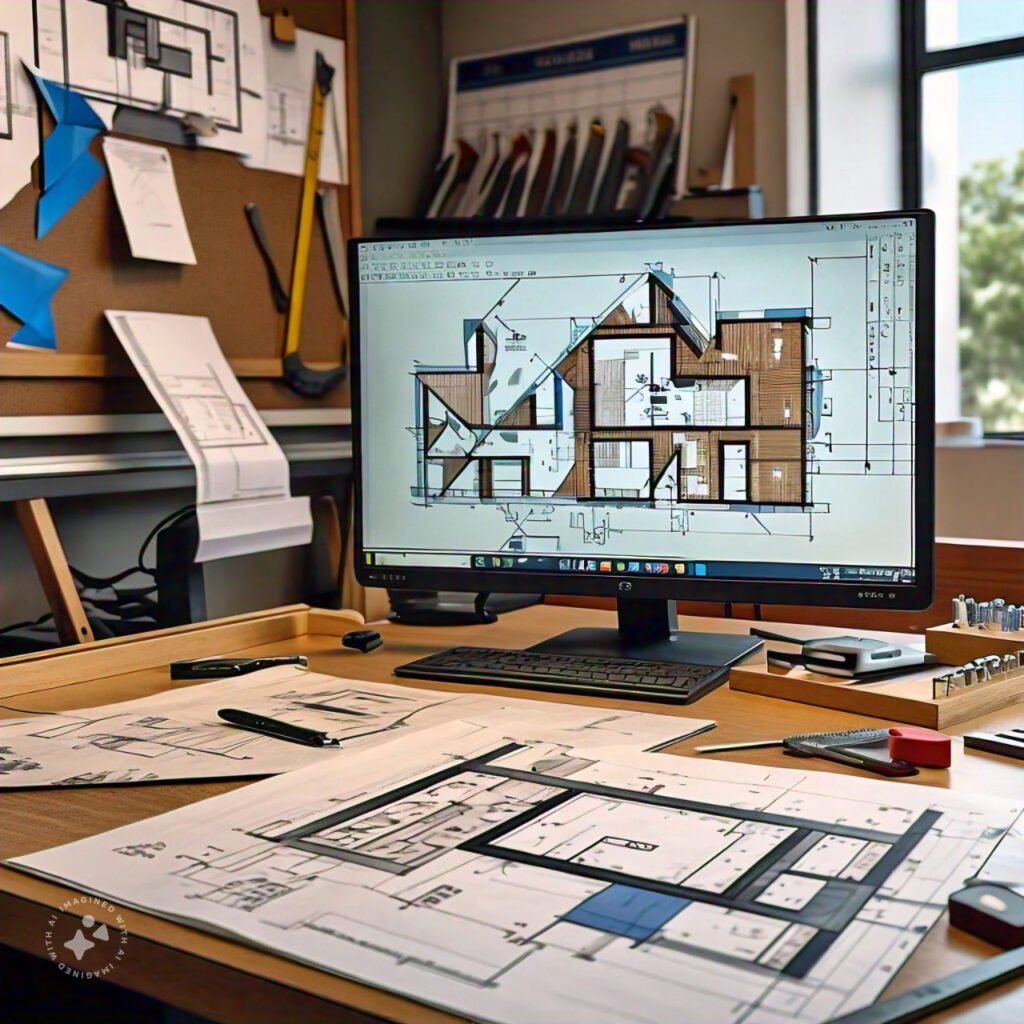Civil engineers use computers extensively in various aspects of their work, from design and analysis to project management and collaboration. Here’s a breakdown of how computers are used in civil engineering:
1.Design and Drafting:

Computer-Aided Design (CAD) Software:
Tools like AutoCAD, MicroStation and Revit are essential for drafting and creating detailed 2D and 3D models of structures, roads, bridges, and other infrastructure.
Building Information Modeling (BIM):
BIM software, such as Revit and Navisworks, allows civil engineers to create intelligent 3D models of projects that contain detailed information about materials, structures, and systems, improving project coordination.
-
Structural Analysis:
Finite Element Analysis (FEA) Software:
Civil engineers use FEA tools like ANSYS, SAP2000, and ETABS to analyze the structural behavior of buildings, bridges, dams, and other structures under various loads (e.g., weight, wind, seismic forces).

Structural Modeling:
Software like STAAD. Pro and RAM Structural System helps engineers design and analyze the load-bearing capacity and integrity of various structures, ensuring safety and compliance with standards.
-
Geotechnical Engineering:

Geotechnical Analysis Software:
Tools like GeoStudio, Plax is and FLA are used to model soil behavior, evaluate slope stability, and analyze foundations for large structures.
Groundwater and Soil Simulation:
Software like Mod flow is used to model groundwater flow and predict the movement of water in the subsurface, which is crucial for projects involving tunnels, dams, and environmental assessments.
-
Transportation Engineering:
Traffic Simulation Software:
Tools like VISSIM, Synchro, and CUBE allow transportation engineers to simulate traffic patterns, optimize signal timings, and plan road networks.
Highway Design:
Civil 3D(a specialized AutoCAD version) is widely used for the design of roadways, railways, and other transportation infrastructure.
-
Water Resources Engineering:
Hydrologic and Hydraulic Modeling Software:
Tools like HEC-HMS, HEC-RAS, and SWMM are used to simulate water flow, flooding, drainage, and storm water systems. These tools help design flood control measures, drainage systems, and water distribution networks.
Water Supply and Treatment Design:
Engineers use tools like EPANET and Water GEMS for the design and analysis of water distribution and wastewater treatment systems.
-
Environmental Engineering:

Environmental Simulation Software:
Programs like AERMOD and CALPUFF are used to simulate air quality and pollutant dispersion in the atmosphere.
Waste Management and Sustainability:
Tools like Life Cycle Assessment (LCA) software help civil engineers assess the environmental impacts of materials and processes used in construction.
-
Project Management:
Project Planning and Scheduling Software:
Tools like Microsoft Project, Primavera P6, and Procore help civil engineers manage large-scale projects by scheduling tasks, assigning resources, and tracking progress.
Cost Estimation and Budgeting: Software like Bluebeam, Cost X , and Plan Swift assist in estimating the costs associated with materials, labor, and other resources in civil engineering projects.
-
Surveying and GIS:
Surveying Software:
Civil engineers use surveying tools such as Leica and Trimble equipment integrated with software to measure and map land, calculate distances, and create topographic maps.
Geographic Information Systems (GIS):
GIS software like ArcGIS and QGIS are used to analyze spatial data, create maps, and manage geographic information related to terrain, utilities, and infrastructure.
-
Collaboration and Communication:
Collaboration Platforms:
Civil engineers use platforms like BIM 360, Autodesk Construction Cloud, and Microsoft Teams for real-time collaboration on projects. These tools allow multiple stakeholders to work on designs, share updates, and track changes efficiently.
Document Management:
Software like SharePoint, Procore, and Box help engineers organize, store, and access project documents, drawings, contracts, and reports.
-
Data Collection and Monitoring:

Drones and Remote Sensing:
Drones equipped with cameras and sensors are used to capture aerial data, monitor construction progress, and survey large areas of land quickly.
IoT and Sensors:
Civil engineers use the Internet of Things (IoT) devices and sensors to monitor infrastructure in real time, such as bridges or dams, by tracking stress, temperature, and other critical parameters.
-
Sustainability and Green Building:
Energy Modeling Software :
Tools like Energy Plus and Design Builder help civil engineers design buildings with optimal energy efficiency, improving sustainability through passive design strategies.
LEED Certification:
Software like LEED Online assists in the planning and certification process for sustainable buildings under the LEED (Leadership in Energy and Environmental Design) standards.

Civil engineers rely heavily on computers to increase efficiency, accuracy, and collaboration across every phase of a project.


